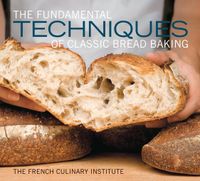Advertisement
Soy flour
Appears in
Although it can be used to create breads for people with wheat protein allergies, soy flour, in commercial bread making, is generally used in very small amounts in combination with wheat flours to improve crumb, give excellent toasting quality, increase nutritional value, and prolong shelf life. Soy flour is approximately 50 percent protein and contains more fat than most other flours. Commercial bakeries that use soy flour tend to use the low-fat variety; full-fat soy flour is used mainly in sweet goods where it can comprise up to 12 percent of the total flour weight. Enzyme-active soy flour is soy flour that has not been heat-treated as much as other soy flours thereby retaining some of its enzymes, specifically lipoxygenase. Lipoxygenases function as bleaching agents on the carotenoid pigments of flour to produce a whiter crumb color; they may also improve dough strength and mixing tolerance. The Food and Drug Administration (FDA) sets a maximum usage level for enzyme-active soy flour at .5 percent of the total flour weight.


